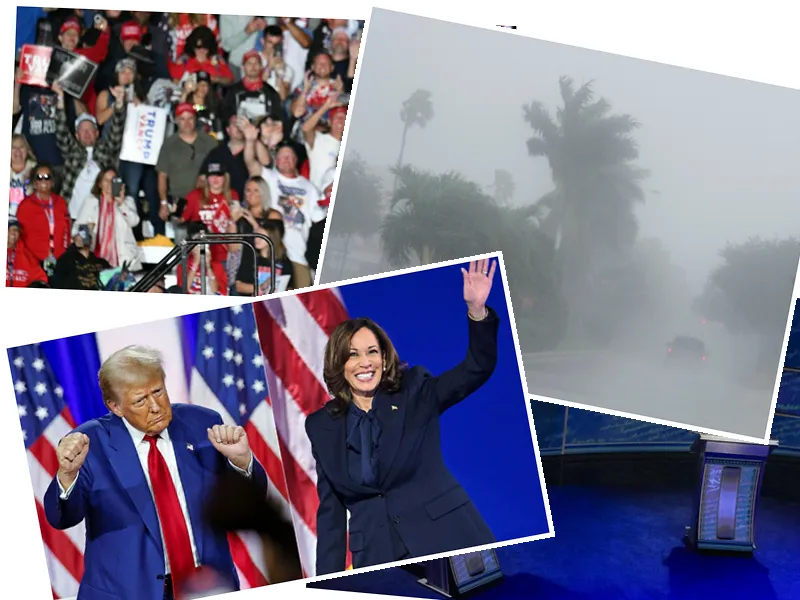The 2024 US election is expected to be one of the most contentious in recent history, with both candidates appealing to different voter demographics and addressing key issues such as the economy and social rights.
Swing states like Pennsylvania, Wisconsin, and Michigan are critical battlegrounds that could determine the election outcome, reflecting the divided nature of the American electorate.
Undecided voters represent a significant challenge for both campaigns, with many expressing dissatisfaction with the leading candidates.
The election may result in a very close outcome, potentially leading to a tie in the electoral college, which would invoke a contingent election in the House of Representatives.
Increased voter turnout among young and minority groups could favor Harris, while Trump's appeal to older, white voters may bolster his chances in swing states.
The outcome in key swing states will likely hinge on the candidates' ability to address the concerns of undecided voters and mobilize their respective bases.
Paths to Victory in the 2024 US Election
The 2024 US presidential election is shaping up to be a closely contested battle between Democratic Vice President Kamala Harris and former Republican President Donald Trump. Both candidates are vying for 270 electoral votes, a crucial number needed to secure the presidency. The complex American electoral system means that the popular vote is not as significant as winning specific swing states, which have been identified as pivotal in determining the election outcome.
Harris's campaign is focusing on the so-called "northern route," aiming to win key swing states such as Wisconsin, Michigan, and Pennsylvania. If she can secure victories in these states, she would reach the magic number of 270 electoral votes. In total, there are numerous combinations of swing state victories that could lead Harris to victory, with Pennsylvania being a central battleground.
On the other hand, Trump is targeting a different strategy, where winning North Carolina, Georgia, and Pennsylvania could also yield him the necessary electoral votes. Both candidates face unique challenges, with Trump's campaign emphasizing economic issues and Harris focusing on mobilizing young and minority voters. The outcome in these swing states is expected to be extremely close, reflecting a divided electorate.
The Role of Undecided Voters and Key Demographics
As the election approaches, undecided voters play a critical role in shaping the outcome. Many of these voters express dissatisfaction with both candidates, often describing their choices as a selection of the lesser evil. Concerns about Harris's perceived lack of experience and Trump's character are common themes among undecided voters. Polls indicate that Harris has made inroads with African American voters, while Trump is gaining traction among Latino voters, particularly in key states like Arizona and Nevada.
The gender gap is also notable, with Harris performing better among women and Trump leading among men. This dynamic could significantly influence the election results, as turnout among these demographic groups is crucial in swing states. Both campaigns are making concerted efforts to appeal to these voters, with Harris emphasizing women's rights and Trump focusing on economic recovery and security.
Predictions and Polling Challenges
As of now, polling data shows a tight race, with Harris slightly ahead in some national polls. However, the inherent challenges of the electoral college system mean that national polling may not accurately reflect the final outcome. Key swing states are where the battle will be won or lost, and both candidates are investing heavily in these areas.
The potential for a tie in the electoral vote remains a possibility, which would lead to a contingent election in the House of Representatives. Historically, ties in US elections have been rare, but the current political climate could lead to unprecedented scenarios. In conclusion, as the election day approaches, both candidates must navigate a complex landscape of voter sentiment, demographic shifts, and strategic campaigning to secure victory.






